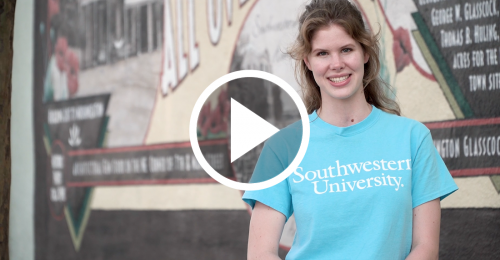News
A Moment of Light
Professor Michael Cooper resurrects the extraordinary lost works of Florence Price and Margaret Bonds.
November 14, 2023
November 14, 2023
Open gallery

At the time of her death in 1953, Florence Price had made her mark as a pioneer among Black concert music composers. A respected member of the Black Chicago Renaissance, she was the first Black woman to have a large-scale composition performed by a major American symphony orchestra—at no less grand an occasion than the 1933 Chicago World’s Fair. Even a decade after her passing, her legacy was such that Chicago Public Schools dedicated an elementary school in her name. Yet as the twentieth century wore on, the twin gatekeepers of classical music and music publishing effectively silenced Price’s contributions, relegating her to obscurity.
Price’s collaborator Margaret Bonds enjoyed even greater renown during her lifetime. The first Black soloist with the Chicago Symphony Orchestra, Bonds earned national accolades for popularizing African-American spirituals, including the oft-recited “He’s Got the Whole World in His Hands.” When she died in 1972, three biographies of the celebrated pianist and composer were in the works, and memorial ceremonies took place in eleven major cities. But those biographies never appeared, and within ten years, Bonds had also been expunged from the annals of classical music.
Fortunately, Professor of Music Michael Cooper is working to rectify these “systemic erasures” of Price’s and Bonds’ works. For the past five years, he has been diligently editing and publishing their manuscripts so that they can be more easily read and performed by today’s musicians. He has released seventy of Price’s pieces and eighteen (of a slated fifty) editions of Bonds’ works. Most had previously gone unpublished, and their performances—several at Southwestern—are often world premieres.
Cooper is also authoring the first two books about Bonds’ life and music. One will be published in fall 2023 by Cambridge University Press and focuses on the two pinnacles of her social-justice compositions, the Montgomery Variations and her setting of W. E. B. Du Bois’s “Credo.” The other, a 2024 biography with Oxford University Press, will highlight her civil rights contributions and championing of fellow Black artists and activists.
“[Bonds] wrote nearly five hundred works, … so the only question is how many tomorrows I have left to keep bringing them out,” says Cooper. He has also edited 150 pieces by Price, with sixty already published, and has at least 113 more to come. “I will keep working on both of them until I can’t,” he promises. “It’s just a huge amount of music.”
A Decades-Long Search
Perhaps the most surprising aspect of Cooper’s research has been the consistently high quality of the composers’ works. When he first began delving into the archives, he says he “expected to find some good pieces, some great pieces, and some weaker pieces because both composers were human, and we all have our off days. But there are no weak pieces. Bonds and Price on their worst days are better than most composers are on their best days.”

That virtuosity is partly what compels Cooper. Another motivation is restoring Price and Bonds to their rightful places in the pantheon of music history. “I’ve always been interested in the music that has been erased—the story we are not told,” he explains. That fascination has led him to explore the similarly obscured work of Felix Mendelssohn, Fanny Hensel, and Clara Schumann. Cooper’s passion for Price and Bonds was sparked, he shares, by “a moment of light” he experienced while pursuing his master’s at Florida State University. Sitting in the pews of a Tallahassee church, he was introduced to Price’s “Songs to the Dark Virgin” and Bonds’ “Three Dream Portraits.” “I was stunned,” he recalls. “I had never heard music so beautiful, so powerful, so original.”
After the recital ended, Cooper immediately began seeking pieces by these unfamiliar composers. But he was stymied in his search. “Honestly, I was angry that I had been taught so much and never heard these composers’ names or any of their music anywhere,” he reveals. Price had written at least 426 compositions, yet he could only find a scant few. Bonds, too, had also produced hundreds of pieces, but again, he could find only a handful.
When his initial searches yielded little more than frustration, Cooper wasn’t necessarily surprised. “I knew that the doors of music publishers—the gatekeepers for what gets performed and what gets forgotten in classical music—were closed to women and people of color,” he recalls. But a burning question remained: “What was the rest of their music like?”
“An Incredible Wealth of Musical Imagination”
Price’s and Bonds’ manuscripts remained elusive for the decades that followed. One might expect that their compositions would have emerged when diversity initiatives began in the 1990s, but nothing materialized. By 2011, no major discoveries had appeared, so Cooper began compiling all his data on Price and Bonds. A few years later, after completing various professional commitments, he could finally devote his full attention to unearthing these composers’ manuscripts.
“It was terrifying,” he remembers, “because there was a very real chance that I would find music that was significant because it had been ‘othered’ out of existence, marginalized to the point of invisibility, but not musically remarkable. Fortunately, it turned out to be more than that. It [was] an incredible wealth of musical imagination.”
The treasure trove of compositions produced by Price and Bonds exhibited a fascinating array of musical styles, influences, and innovations. Cooper quickly realized that editing and publishing their works so that today’s musicians could perform them was the key to sharing his moment of light from decades earlier. It would also help reinvigorate the appreciation Bonds and Price so richly deserved.
Challenging the Demons of Classical Music
Restoring Price’s and Bonds’ extraordinary works—an effort Cooper shares with fellow scholars and eminent musicians such as Lara Downes, Althea Waites, and Karen Walwyn—will hopefully not just right the wrongs of music publishing but also diversify symphony orchestras and music education. A 2016 League of American Orchestras report, for example, revealed that only 1.8 percent of U.S. classical musicians were Black and 2.5 percent Hispanic/Latino—distressingly low numbers that have not improved much in the past seven years. Similarly, Philip Ewell of Hunter College documented in 2020 that 98 percent of the examples published in music textbooks were by white composers. Such limited diversity can discourage young musicians of color from studying or pursuing careers in music. But by teaching, publishing, and performing the work of Bonds, Price, and other composers with whom they can identify, Cooper and his cohorts hope to broaden students’ perspectives and orchestras’ inclusivity.
Opening eyes, ears, and hearts to long-neglected artists could also elevate audiences’ engagement with classical music. “Generally speaking, classical music is considered ‘other’ in U.S. culture,” Cooper explains. For example, Hollywood films often associate classical music with criminals and psychopaths (think Hannibal Lecter’s penchant for Bach’s Goldberg Variations in The Silence of the Lambs); such subliminal but potent messages can repel both potential musicians and audiences. Moreover, an orchestra’s “beautiful sounds” and “the choreography of the [violin and cello] bows” may enthrall young musicians, but they quickly learn that they will be asked to sing or play pieces that have been performed again and again for centuries—works usually composed by long-dead white European men, with whom young performers don’t necessarily identify. “That,” Cooper comments, “is a cultural prejudice that … classical music is aiding and abetting by refusing to acknowledge and challenge its demons: the powerful and pervasive racism and sexism of classical music historically. That’s why we have to challenge it.”
Giving Voice to the Silenced
SU students have already taken part in that necessary challenge. On February 25, for example, the Southwestern Chorale and Austin Civic Orchestra performed Margaret Bonds’ setting of Du Bois’s “Credo.” Cooper was overwhelmed with emotion as he listened to students “sing their hearts out.” One chorale member told Cooper it was “a life-altering experience” to perform such a remarkable piece.

“To me, that opportunity to lift their voices in song, proclaiming those words with that powerful music—that was forcibly silenced for over half a century—was an inspiring moment,” he describes. Such shared experiences, he adds, give even more meaning to his work.
Still, there’s much more to be done. Beyond Price and Bonds, dozens of other composers have yet to be rediscovered. Recovering, publishing, teaching, and performing their compositions is crucial, Cooper says, if we’re to correct our image of twentieth-century music.
That process will require a community effort—one that mirrors the collaborative efforts of Price, Bonds, and other musicians whose apotheosis was the result of “lifting as we climb,” the motto of the National Association of Colored Women’s Clubs. That’s why Cooper often reminds his students that they “have more tomorrows than yesterdays … to understand the music equitably, fairly, in its richness and its beauty.”
The music alone merits these efforts, as evidenced by the undeniable rapture that audiences, musicians, and Cooper alike experience when hearing it performed. However, he also finds it “historically significant that [Price and Bonds] refused to play by the rules …. They wrote in musical styles and idioms that drink deeply of the African-American musical heritage but also reflected that they loved classical music, which white people considered their own. That resistance, which achieved such eloquence in their art, is a source of inspiration that will—that must—ultimately prevail.”
For updates on new discoveries about Price and Bonds, follow Cooper’s musicology blog Journeys at https://cooperm55.wixsite.com/jmc3.






























